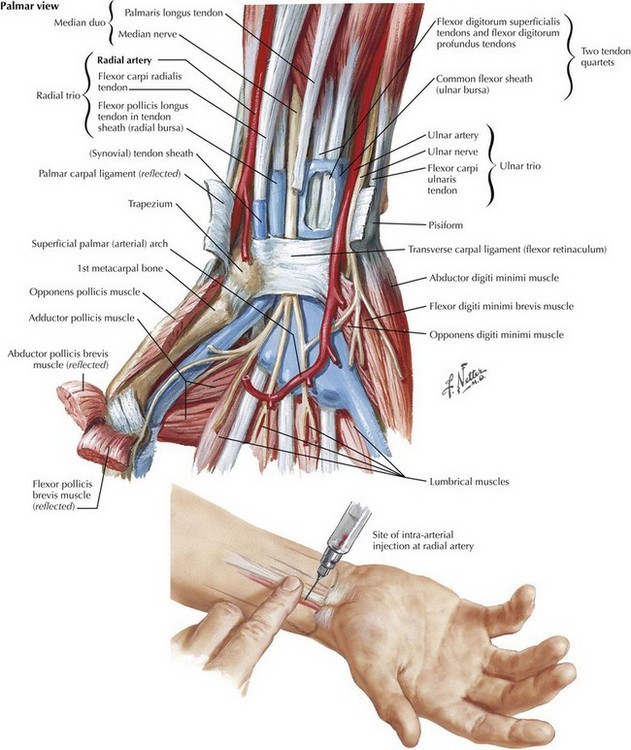Chapter 41 The radial artery is chosen most frequently for arterial cannulation because it is readily accessible, relatively easy to cannulate, easily tested for collateral circulation, and associated with few long-term complications (Fig. 41-1). The radial artery is palpated between the distal radius and the flexor carpi radialis tendon. In this area the radial artery is covered by skin, subcutaneous tissue, and fascia only.
Arterial Line Anatomy
Radial Artery
Stay updated, free articles. Join our Telegram channel

Full access? Get Clinical Tree



